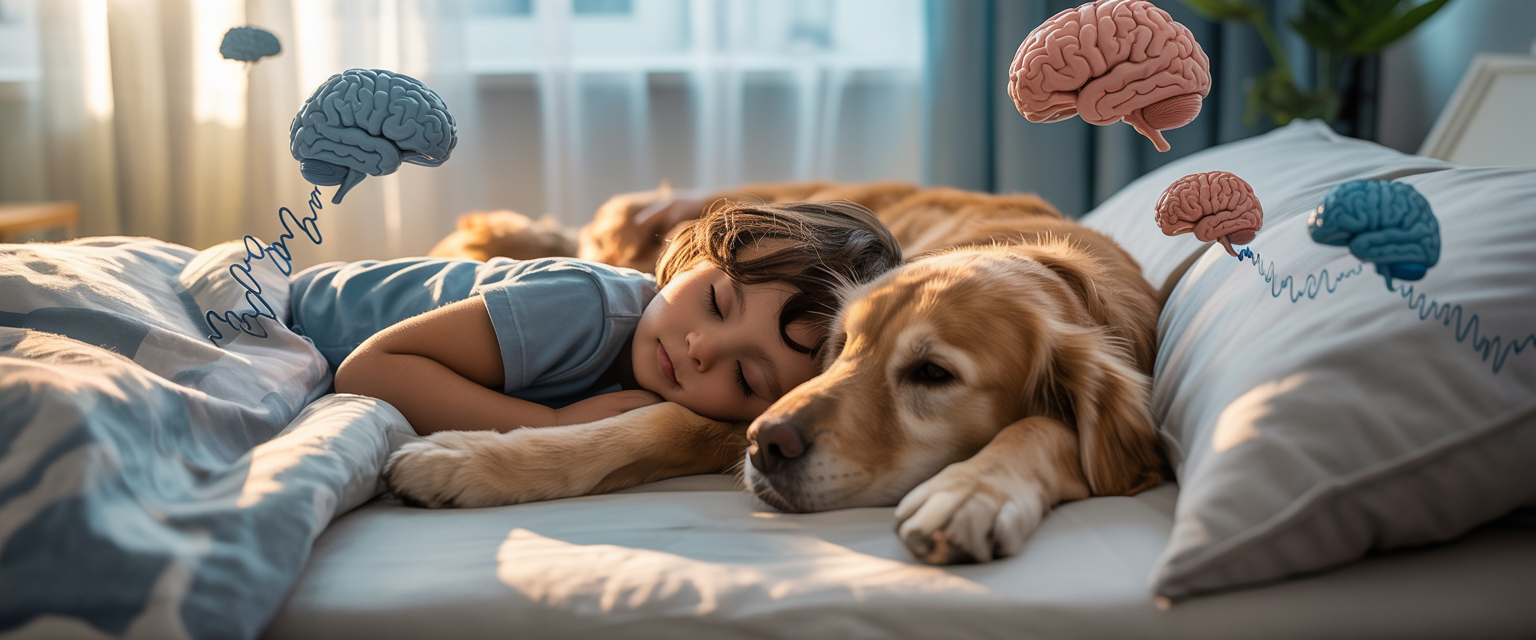How pet ownership rewires our brains for better stress management

TL;DR
A major longitudinal study tracking children from infancy through age 8 reveals that early pet ownership significantly reduces anxiety and depression symptoms in childhood. The research shows that children exposed to pets at ages 1 and 4-5 demonstrated measurably better mental health outcomes, with the benefits appearing to stem from neurochemical changes that build stress resilience and emotional regulation skills during critical brain development windows.
Why This Matters
This research provides the first robust, long-term evidence that pet ownership during early childhood creates lasting mental health benefits—not just temporary comfort. For families concerned about rising childhood anxiety rates and seeking natural approaches to support their children's emotional development, this study reveals how early pet exposure can literally rewire developing brains for better stress management and emotional resilience. The findings suggest that the family pet may be one of the most accessible and effective early interventions for supporting lifelong mental wellness, offering parents a proactive strategy that works alongside—not instead of—traditional approaches to child mental health.
Key Research Findings
The INMA project study followed children from birth through age 8, creating one of the most comprehensive datasets on early pet exposure and mental health outcomes:
Mental Health Improvements:
- Children with early pet exposure showed significantly fewer symptoms of anxiety and depression at ages 7-8
- The benefits were most pronounced in children who had sustained pet interaction at both age 1 and ages 4-5
- Dogs and cats were the primary animals associated with positive mental health outcomes
Critical Timing Windows:
- Age 1 exposure established foundational benefits
- Continued exposure at ages 4-5 amplified and sustained these improvements
- The effects were measurable and persistent through early school years
Population Impact:
- Benefits appeared consistent across the study population, suggesting broad applicability
- The research controlled for various socioeconomic and family structure factors
The Science Behind the Pet-Brain Connection
Neurochemical Pathways:
The research points to oxytocin release as a key mechanism driving these mental health benefits. When children interact with pets—through petting, playing, or simply being in their presence—their brains release oxytocin, often called the "bonding hormone." This neurochemical cascade reduces cortisol (stress hormone) levels while promoting feelings of calm and connection.
Think of oxytocin as your brain's natural anti-anxiety medication. Unlike pharmaceutical interventions, pet-triggered oxytocin release happens naturally and repeatedly throughout daily life, creating ongoing stress resilience rather than temporary symptom relief.
Critical Development Windows:
Early childhood represents a period of extraordinary brain plasticity, when neural pathways are forming rapidly and environmental inputs have outsized influence on brain architecture. Pet interactions during these windows appear to "program" the developing stress response system for better emotional regulation.
Social and Emotional Learning:
Beyond neurochemistry, pets provide children with opportunities to develop empathy, responsibility, and emotional intelligence. These skills create a foundation for better stress management and social relationships throughout life.
What This Means for Family Wellness
Early Intervention Opportunity:
This research suggests that pet ownership could serve as a form of preventive mental health care. Rather than waiting for anxiety or depression symptoms to emerge, families can proactively support their children's emotional development through early pet exposure.
Complementary Approach:
The study positions pet ownership as a complement to, not replacement for, traditional mental health support. For families already managing childhood anxiety or depression, pets may enhance the effectiveness of other interventions while providing daily emotional support.
Stress Resilience Building:
The benefits extend beyond symptom reduction to actual stress resilience building. Children who develop strong oxytocin response patterns early may be better equipped to handle academic pressure, social challenges, and life transitions throughout their development.
Important Considerations
Not a Universal Solution:
Researchers emphasized that these findings shouldn't be overgeneralized. Pet ownership requires significant commitment, resources, and lifestyle adjustments that aren't feasible for all families. The mental health benefits, while significant, don't guarantee protection against all childhood mental health challenges.
Individual Variation:
Some children may not respond as positively to pet interaction, and factors like allergies, fears, or family dynamics can influence outcomes. The research shows population-level trends, not individual predictions.
Quality of Interaction Matters:
The benefits likely depend on positive, nurturing pet relationships rather than simply having an animal in the home. Stressed, neglected, or aggressive pets could potentially create opposite effects.
What You Can Do
If Considering Pet Ownership:
- Evaluate your family's readiness for the long-term commitment pets require
- Consider starting with lower-maintenance pets if full dog or cat ownership isn't feasible
- Research pet breeds and temperaments that align with your children's ages and personalities
Alternative Approaches:
- Regular visits with friends' or relatives' pets can provide some benefits
- Volunteer opportunities at animal shelters or therapy animal programs
- Pet therapy programs in schools or community centers
Supporting the Benefits:
- Encourage active, nurturing interaction between children and pets
- Use pet care as opportunities to teach responsibility and empathy
- Monitor both child and pet wellbeing to ensure positive relationships
What to Watch
Expanding Research:
Future studies will likely explore optimal timing, duration, and types of pet interactions for maximum mental health benefits. Researchers are also investigating whether these benefits extend into adolescence and adulthood.
Clinical Integration:
Mental health professionals may begin incorporating pet therapy recommendations into early intervention strategies, particularly for families with genetic predispositions to anxiety or depression.
Policy Implications:
This research could influence policies around therapy animals in schools, housing regulations for families with mental health needs, and insurance coverage for pet-assisted interventions.
The Bottom Line
Early childhood pet ownership appears to create lasting mental health benefits by supporting healthy brain development during critical windows. While not a magic solution, pets can serve as powerful allies in building children's stress resilience and emotional regulation skills. For families able to provide proper pet care, this research suggests that furry family members may be one of the most natural and effective investments in their children's lifelong mental wellness.



